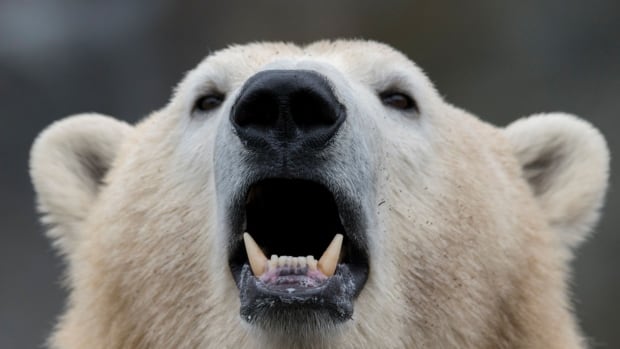
With an extinction threat looming, no wonder polar bears are at our door — and on the roof
CBC
Our planet is changing. So is our journalism. This column is part of a CBC News initiative entitled "Our Changing Planet" to show and explain the effects of climate change. Keep up with the latest news on our Climate and Environment page.
Bobbi Stevens had no idea she was going to make national news this month when an unusual visitor — a polar bear — not only came to her house, but made its way to her roof.
Stevens lives in St. Anthony, a town on the northern tip of Newfoundland, not far from Labrador and the sea ice that the north Atlantic serves up around this time of year.
"My roof's not that strong and I only have one door on this house.… One less nail and he might have come through," Stevens said in an interview with CBC.
"I'm just glad I didn't know he was there when he was there."
Stevens learned about the bear from the barks of her dog, and got a surprise when she opened her door. "I looked up on the bank above my steps [and] this polar bear was looking me in the face."
She didn't know that the bear had been above her head until she learned that a neighbour's security camera had recorded the animal's explorations.
Polar bear sightings in communities along Newfoundland and Labrador's coastlines are not that rare at all, especially in recent years. More years than not, there is a warning somewhere in the province, sometimes in multiple places, for the public to beware of polar bears on the land, and not on ice or at sea, their more usual terrain.
But shrinking ice fields in the Arctic — a factor accelerated by climate change — have had enormous consequences for an animal that is literally linked to the region. The word "arctic," after all, comes from the Greek word "arktos," meaning "bear."
The very name of the animal — polar bear — ought to remind us that it should be found (and flourishing) closer to and not farther away from the North Pole.
Yet here we are, and there they are. In preparing this column, I looked at our coverage over the years of polar bear sightings and encounters. There have been plenty of them, and a few themes emerged, including bears showing up in places like La Scie, Fogo Island, Greenspond, Grates Cove, and even as far afield as the Hibernia platform, which is anchored about 315 kilometres southeast of St. John's.
Violent encounters between bears and people are not common, but they do happen. For instance, a hiker was seriously injured in Torngat Mountains National Park nine years ago. More often, fortunately, people have been rattled but not hurt.
Polar bears, after all, are more apt to eat seals, not people. But to find the seals, they need ice, and that is where things have gone proverbially south.
Scientists have been collecting evidence for years about the loss of sea ice and piecing together the impact it has had on polar bears. The impact of course extends beyond that species, as they — and we — are all connected. Last year, CBC Newfoundland and Labrador produced a series called Thin Ice, which examined how dwindling ice has affected the Inuit of northern Labrador.













